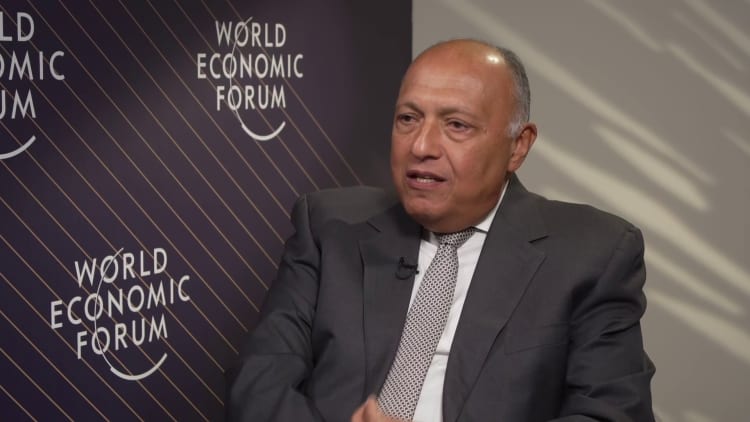While national attention is focused on the chaos at the southern border, President Biden has steadily rebuilt a legal path for immigration that was destroyed during the Trump administration.
The United States allowed more than 40,000 refugees into the country in the first five months of the fiscal year after passing a rigorous, often years-long vetting process that included security and medical checks as well as interviews with American officials abroad.
The figure represents a significant expansion of the refugee program, which is at the core of U.S. law and provides desperate people from around the world a legal way to find safe haven in the United States.
The United States has not granted refugee status to so many people in such a short period of time in more than seven years. The Biden administration is now on track to admit 125,000 refugees this year, the highest number in three decades, said Angelo Fernández Hernández, a White House spokesman.
In comparison, around 64,000 refugees were admitted in the last three years of the Trump administration.
“Since Biden took office, the Biden administration has had major conversations about resettling more refugees,” said Julia Gelatt, deputy director at the Migration Policy Institute, a nonpartisan research group in Washington. “We’re finally seeing the numbers pay off in higher numbers.”
But as the presidential campaign heats up, immigration advocates fear the gains will be wiped out if former President Donald J. Trump is elected. The former president has promised to suspend the program when he takes office again, as he did for 120 days in 2017.
Mr. Trump has called the program a security threat, even though refugees undergo extensive background checks and vetting. He reassigned officials, closed foreign posts and cut the number of refugees allowed into the country each year.
When Mr. Biden took office, the result was a system without resources.
“The refugee program is at stake in this election,” said Barbara L. Strack, the former chief refugee official at U.S. Citizenship and Immigration Services.
“Like my birthday”
The refugee program receives far less attention than the country’s asylum system, which is collapsing under the weight of millions of new arrivals at the southern border.
The paths to applying for asylum and refugee status are separate. Potential refugees apply for the program abroad and wait for the selection process there. Asylum seekers apply when they set foot on American soil, and their applications must then make their way through an overburdened immigration court system.
Mr. Biden has taken a harder line on asylum in recent months as he faces growing pressure to restore order at the southern border.
The refugee program has received strong bipartisan support in the past, in part because it was seen as the “right way” to come to the United States.
Senator John Cornyn, Republican of Texas, said in a congressional hearing last year that the process for the refugee program was “robust.” He said he did not view the program as a “significant” security risk and said the program’s strict controls were in “contrast to the chaos we are seeing at the southern border.”
Still, some of that bipartisan support has declined as the number of people crossing the southern border has reached record levels. Mr. Trump has made his anti-immigrant platform a hallmark of his political identity, calling for sealing the country off from immigrants — both legal and illegal.
But for people like Machar Malith Geu, who lived in a refugee camp in Kenya most of his life, the possibility of coming to America seemed to be his only hope for the future.
It took six years, but his application to resettle in the United States was approved and he arrived here in February. His new home is in Wichita, Kan.
“When I was accepted to come to the United States of America, it was like my birthday again because I knew I would be leaving the life of a refugee behind me,” said Mr. Geu, whose family left the country in the 1990s Today’s South Sudan fled.
Mr. Geu, 33, said he would not consider heading to the U.S.-Mexico border and crossing illegally. In recent years, the southern border has seen a surge in migration from African countries, including Mauritania, Senegal and Angola.
“I never dared to come to America or any other place illegally,” he said. He just hoped to “stay alive,” he said.
Now he has applied for a work permit and wants to become a security guard before bringing his wife and three daughters to the United States. While he waits, he has found solace by playing pickup basketball with refugees from Sudan and Congo.
After refugees are accepted for resettlement, the U.S. government provides funding for cultural orientation courses and connects them with local groups that help them get on their feet with job training, food and housing.
Refugees must apply for a green card within one year of arriving in the United States. Later they can obtain American citizenship.
reconstruction
The Biden administration inherited a program that had been stripped to the bone during the Trump years.
Mr. Trump repeatedly warned that refugees posed a threat. During a 2020 rally in Minnesota, he said that refugees were coming from “the most dangerous places in the world, including Yemen, Syria and your favorite country, Somalia, right?”
At one point, Mr. Trump allowed states and cities to refuse to accept refugees, a measure that was later blocked in federal court.
The International Rescue Committee stated, contrary to Mr. Trump’s claims, that “the most difficult route to the United States is as a refugee.”
“Refugees face more intensive screening than any other group seeking entry to the United States,” the group said in a statement. “Anyone who wants to come here must first be registered by the United Nations Refugee Agency, which identifies the families most in need. The U.S. then manually selects each person to be admitted.”
By the end of his term, Mr. Trump had reduced the “refugee cap,” or the maximum number of refugees allowed to be admitted in a single fiscal year, to 18,000 in 2020 and a proposed record low of 15,000 in 2021.
Because funding for local programs is tied to that number, money quickly ran out.
Many organizations that help resettle refugees have had to close their doors. According to the government, the number of officials conducting interviews with refugees fell from about 170 to 107 by the end of the Trump administration.
“I felt pretty demoralized,” Sandra Vines, senior director of refugee resettlement at the International Rescue Committee, said of the Trump years. “I felt like every day I came into the office there was another administrative attack on the program. We called it death by a thousand paper cuts.”
The pandemic also contributed to low refugee admissions in the early years of the Biden administration. In fiscal year 2021, which included part of the Trump administration, the United States admitted just over 11,000 refugees. The next year there were more than 25,000.
The Biden administration has worked to rebuild the infrastructure for the program. About 150 refugee resettlement offices have opened across the country, and the number of refugee officials conducting interviews has also increased.
Signs of a more robust refugee program emerged last year when more than 60,000 refugees were admitted to the country. It was a far cry from the 125,000 limit set by Mr. Biden, but it proved the program was processing more cases.
Beyond the additional resources, the Biden administration has streamlined processing, opening so-called Safe Mobility Offices in Colombia, Guatemala, Ecuador and Costa Rica to help process migrant applications and expand processing of refugees from the region.
“Many people wished they would see the higher admission numbers sooner, but I think those hopes were unrealistic when you understand what it takes to make a program successful,” said Ms. Strack, the former refugee commissioner.
“We are only now seeing the fruits of all the work.”
Source link
2024-04-03 02:00:20
www.nytimes.com







